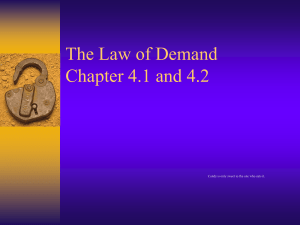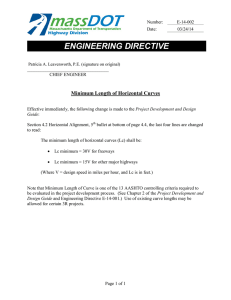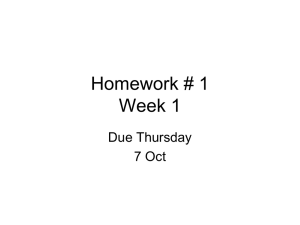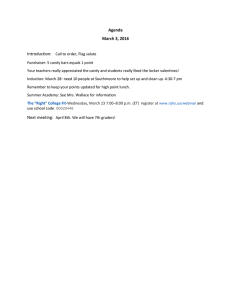Helpful Hint Horizontal Addition
advertisement
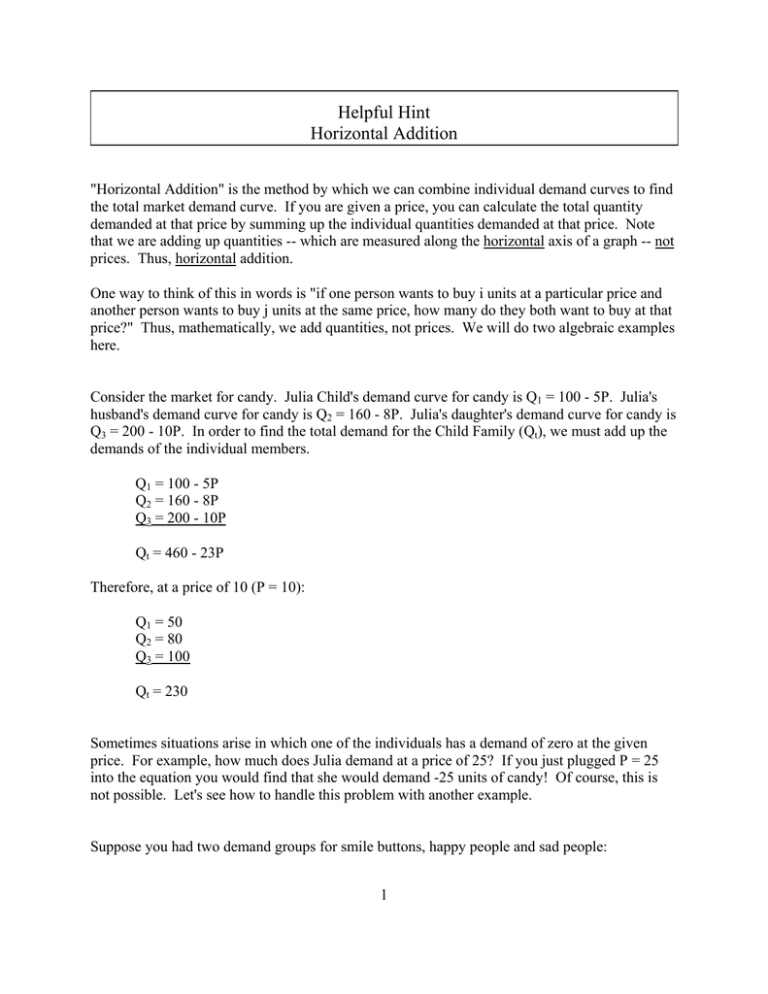
Helpful Hint Horizontal Addition "Horizontal Addition" is the method by which we can combine individual demand curves to find the total market demand curve. If you are given a price, you can calculate the total quantity demanded at that price by summing up the individual quantities demanded at that price. Note that we are adding up quantities -- which are measured along the horizontal axis of a graph -- not prices. Thus, horizontal addition. One way to think of this in words is "if one person wants to buy i units at a particular price and another person wants to buy j units at the same price, how many do they both want to buy at that price?" Thus, mathematically, we add quantities, not prices. We will do two algebraic examples here. Consider the market for candy. Julia Child's demand curve for candy is Q1 = 100 - 5P. Julia's husband's demand curve for candy is Q2 = 160 - 8P. Julia's daughter's demand curve for candy is Q3 = 200 - 10P. In order to find the total demand for the Child Family (Qt), we must add up the demands of the individual members. Q1 = 100 - 5P Q2 = 160 - 8P Q3 = 200 - 10P Qt = 460 - 23P Therefore, at a price of 10 (P = 10): Q1 = 50 Q2 = 80 Q3 = 100 Qt = 230 Sometimes situations arise in which one of the individuals has a demand of zero at the given price. For example, how much does Julia demand at a price of 25? If you just plugged P = 25 into the equation you would find that she would demand -25 units of candy! Of course, this is not possible. Let's see how to handle this problem with another example. Suppose you had two demand groups for smile buttons, happy people and sad people: 1 DH : Q = 300 - 5P DS : Q = 100 - 10P If you just added the two curves as shown above you would get Q = 400 - 15P. At a price of 20, your equation would tell you that 100 buttons were demanded. But on closer inspection you would find that this implies that happy people want 200 and sad people want -100! The lesson is: demand curves can only be added algebraically when the quantity demanded in each equation is at least zero. At prices lower than 10, sad people want buttons, but at prices of 10 or higher, they don't. So above P = 10, demand is limited to happy people, while for P < 10, demand is the combination of happy and sad demands. Thus, at prices above 10, demand is Q = 300 - 5P while at prices below 10, it is Q = 400 - 15P. 2
